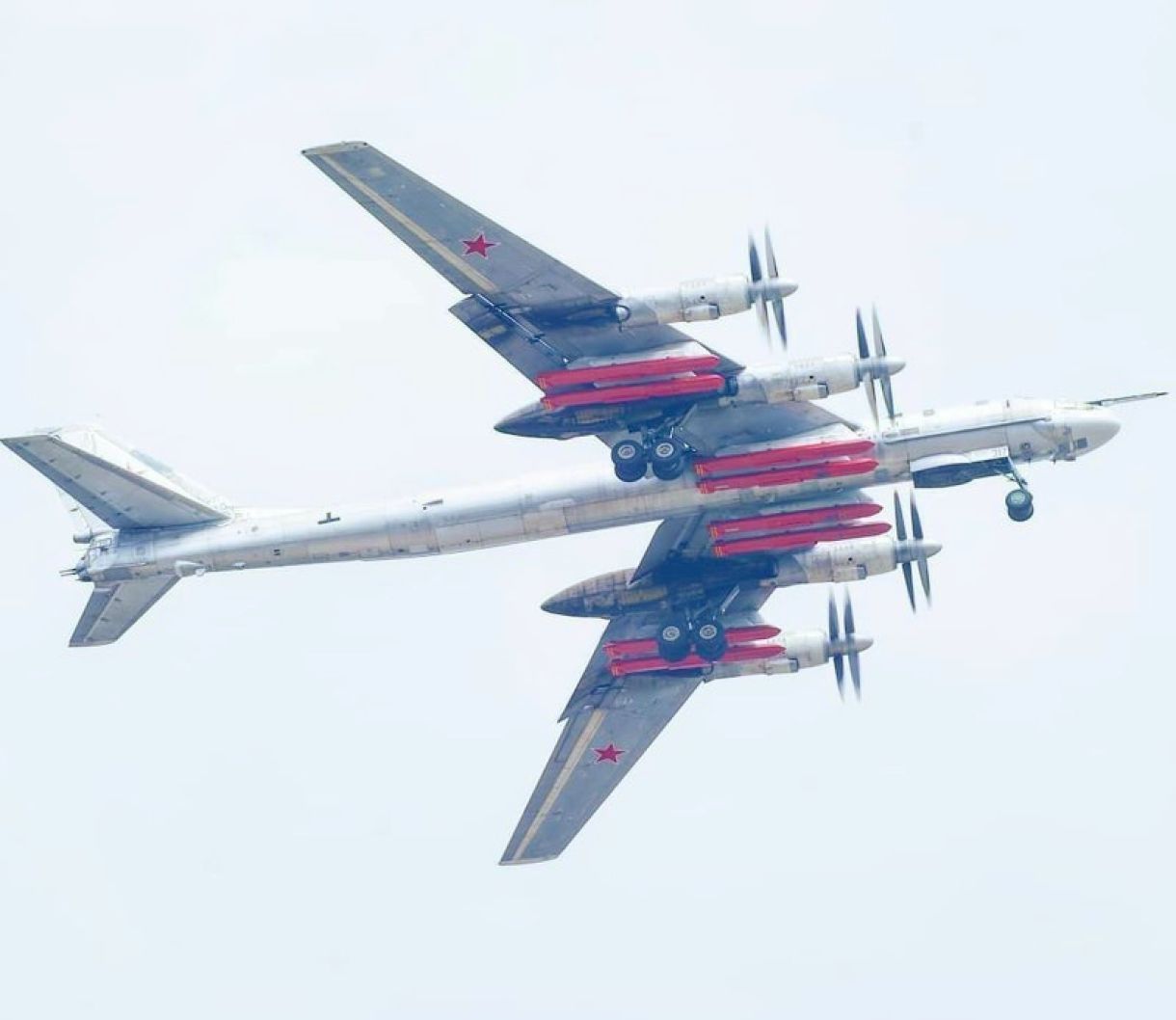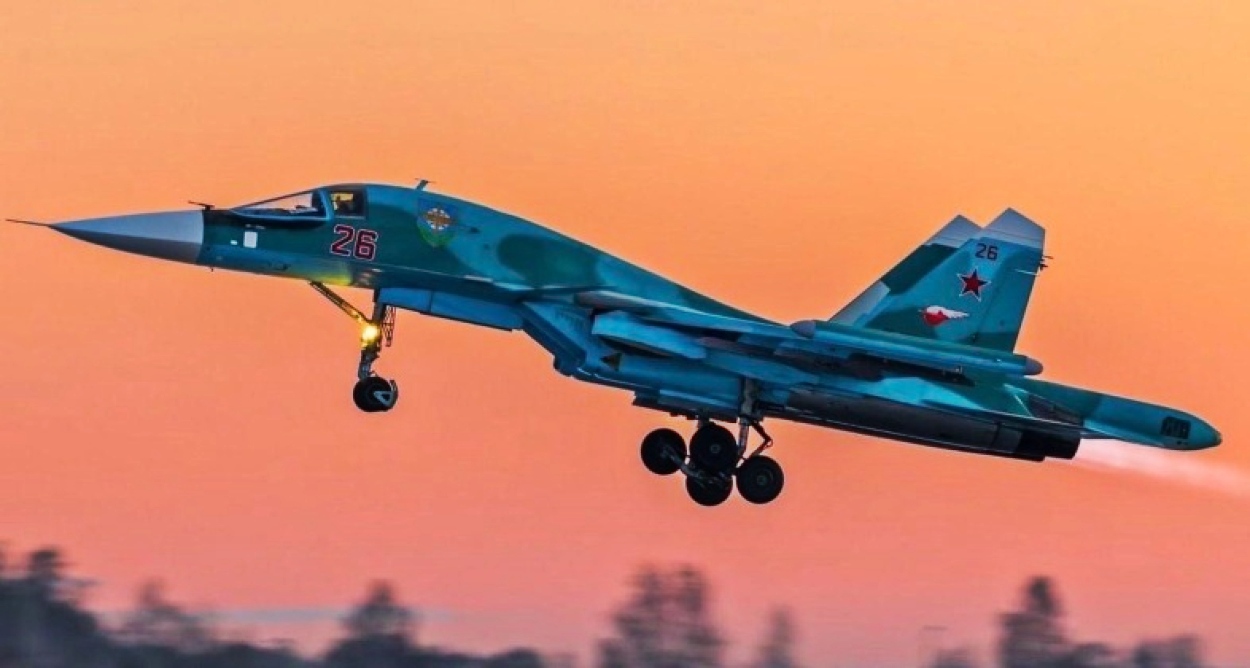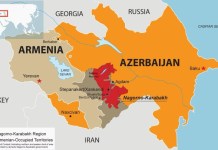Russia’s Su-34 frontline fighter bomber was recently upgraded to launch a long-range cruise missile capable of carrying a conventional or nuclear warhead.
Mad Rush For F-35s! Ukraine War Propels Sale Of Lockheed Fighters; Two More Nations Join The ‘Line’
The upgrade was implemented on the Su-34 NVO (New Capabilities) fighter bomber variant, which first entered service with the air regiment in the Chelyabinsk region in March 2021, RIA Novosti reported.
“The missile is not new, like the aircraft, but they have not been used in one complex before, and the new solution increases the variability of the use of both the missile and the aircraft,” the Russian news agency’s interlocutor explained.
Su-34 NVO Upgrade
The Su-34 NVO upgrade includes improved electronic warfare (EW) systems. Its flight and weapon management system has been upgraded to launch high-precision weapons, carry optronic and radar reconnaissance, and target pods on external pylons. The internal surveillance and targeting capability of the base variant is limited.
Long-Range Cruise Missile
The RIA Novosti source did not name the newly integrated long-range cruise missile, but it is likely to be the Kh-101, a stealth missile that can carry a conventional or nuclear warhead. The nuclear-armed variant is named Kh-102.
The missile reportedly has an operational range of 4,500 km (2,800 miles). It features a guidance package that includes an inertial navigation system (INS), a terrain contour matching (TERCOM) system, a digital scene-matching area correlation (DSMAC) system, and a GPS/GLONASS receiver.
Compared with the older, conventionally-armed Kh-555 ALCM it replaces, the Kh-101 features significantly improved accuracy and a larger payload, making it suitable for use against hardened targets.

According to the open sources, the Kh-101 has a combat weight of 2,400 kg (including a warhead of 400 kg), a length of 745 cm, and a speed of Mach 0.6 to 0.78. The missile can have a high-explosive (HE), penetrating, or cluster warhead.
Kh-101 is currently integrated with the Tu-160 and Tu-95MSM strategic bombers of Russia`s Aerospace Forces (RuAF).
Kinzhal Integration
Earlier this month, TASS reported that the Su-34 had, for the first time, launched a Kinzhal hypersonic missile.
“The Su-34 aircraft used the Kinzhal hypersonic missile during the air strike. The first crew that completed such a task was nominated for state awards,” the agency’s interlocutor said.
Earlier, only the MiG-31K fighter and the Tu-22M3M supersonic bomber could launch the Kinzhal.
You can read Sputnik India’s analysis of the Kinzhal capability here.
Su-34 Production
In December 2020, Sukhoi Company CEO Yuri Slyusar was quoted by the press office as saying that about a hundred Su-34 fighter-bombers have been manufactured under the long-term contract with the Russian Ministry of Defense (RuMoD), United Aircraft Corporation and Sukhoi Company.
The RuMoD and the Sukhoi Company signed a contract in early June 2020 to deliver about 20 Su-34 frontline bombers. The agreement stipulated the manufacture of the baseline version with specific alterations (referred to as the Su-34M), taking into account the experience of pilots flying the baseline versions.
Existing Su-34 were also to be upgraded to the Su-34M standard.
In parallel, the RuMoD negotiated a contract to supply 76 modernized Su-34 NVO bombers by 2027. The UAC would produce 8 to 14 aircraft every year.
Su-34 Evolving Into A Strategic Platform
Before the start of the SMO in Ukraine on February 24, 2022, the Su-34 frontline bomber was armed and used for battlefront interdiction of troops and supplies. In Syria, where airspace was largely uncontested, it was primarily used to drop unguided bombs and short-range precision-guided air-to-surface missiles.

Following the start of the SMO, as Ukrainian airspace became increasingly contested with the influx of Western MANPADs, short and medium-range air defense (AD) systems, Russian Aerospace Forces (RuAF) relied more and more on precision attacks using air-to-surface missiles such as the Kh-31P anti-radiation missile, Kh-59 long range Optical/Radar guided air to surface missile, Kh-36 long-range cruise missile and Kh-38 short range air to surface missile with universal seeker.
Increasing US/Nato Participation In The War
As the SMO has progressed, US and NATO weapons supply to Ukraine has become increasingly escalatory. The strike range of weapons being transferred free of cost has increased from 70 km to 300 km. The strike range could rise to 500 km if Germany agrees to supply its Taurus stealth cruise missile.
Following the failure of the Ukrainian counteroffensive, which started on June 4 but has failed to penetrate Russian defenses in any militarily significant way, US and NATO leaders appear to be throwing caution to the wind.
Earlier, the US/NATO leaders had stopped Ukraine from striking targets in Russia using NATO weapons. Now that stipulation has been waived.
The US Secretary of State, Antony Blinken, speaking recently in the context of the proposed ATACMS supply on ABC, clearly stated, “In terms of their targeting decisions, it’s their decision, not ours.”
He was overstepping a Russian red line that the US had earlier accepted. In the past, President Biden has acknowledged that ATACMS supply could provoke Russia to escalate the conflict.
Most disconcertingly, US and NATO participation in the war has increased and become more direct. In some so-called Ukrainian strikes on Crimea, 80% of the effort behind the strike is likely that of US/NATO military personnel.
Increasing Desperation Of The US And NATO
Despite the escalations, the Russian leadership has declined to be provoked because the stakes are high for the world. However, Russian military leadership has to factor in the possibility that, frustrated by the lack of success on the battlefield in Ukraine, NATO may intervene with boots on the ground.
Russia has foreseen such an eventuality and has been preparing for it for some time. Adding a strategic capability to the Su-34 is likely a part of the strategy to deter NATO aggression.
Conclusion
Russian adversaries can easily monitor the location and movement of Russian strategic bombers using satellite-based optical and radar reconnaissance. Launching a Kh-101 missile by a Russian strategic bomber gives the adversary more than an hour of warning since the bombers can be detected as they taxi to their take-off points!
Upgrading the Su-34 to a strategic role would add to the deterrence for several reasons. The Su-34 is much more widely dispersed than Russian strategic bombers. Also, the Su-34 is optimized for long-duration low-level flight, making radar detection difficult using ground-based radars and AWACS (Airborne Warning & Control System).
In a conflict with NATO, the SU-34 could carry two Kh-101 missiles, cruise undetected to its launch points, and launch the missiles from an unexpected direction. The ability of the Su-34 to launch the Kinzhal missile adds another strategic dimension, making the frontline bomber a credible deterrent.
- Vijainder K Thakur is a retired IAF Jaguar pilot. He is also an author, software architect, entrepreneur, and military analyst. VIEWS PERSONAL
- Follow the author @vkthakur




